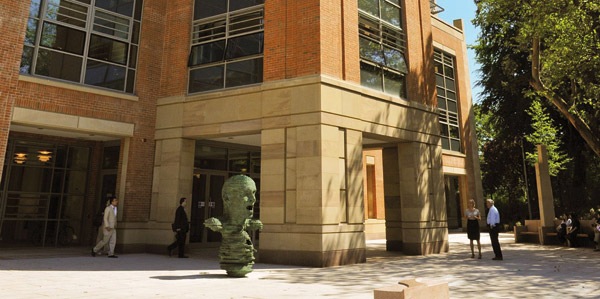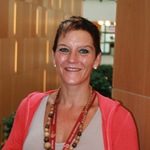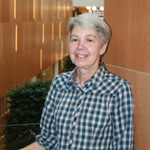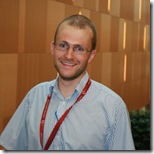A new chapter at the Queen’s Library
Peter Cheney browses Queen’s University’s McClay
Library building and finds out how three of its staff have found the change from old to new.
Named after the late entrepreneur Sir Allen McClay, the library opened its doors for the 2009-2010 academic year and was officially opened by Seamus Heaney in July.
Boston-based architects Shepley, Bulfinch, Richardson & Abbott worked with Belfast architects in the Robinson Patterson Partnership to design the building.
Its current building may be almost new but the Queen’s library dates back to its opening as Queen’s College Belfast in 1849. The first site, in the Lanyon Building, quickly outgrew its size. The Main Library’s old red-brick building was therefore constructed between 1866 and 1868, and extended westwards in 1911. William Henry Lynn was the architect on both occasions.
The McClay houses most of the university’s collections, including its archive, while the separate Medical and Healthcare Library and Agri-Food and Biosciences Institute Library operate from other locations.
On the first floor, the CS Lewis Room (pictured overleaf) is its most artistic room. A replica of the wardrobe door used in the feature film of ‘The Lion, the Witch and the Wardrobe’ marks the way in, while the room itself is decorated with glass-engraved quotations and Narnia- themed carpets and a table. Another wall on that floor is decorated with Malaysian wall-hangings.
John MacGeagh designed the Main Library tower block, constructed between 1962 and 1967. He is better known for the Geology and New Physics Buildings. The industrially-shaped Science Library opened in 1969 and the Seamus Heaney Library in 1996.
The Heaney building now houses an advice centre and study space for international and postgraduate students, while the Science Library is used for temporary accommodation. Queen’s is currently “considering options” for the future use of the red-brick Lynn Library and the Main Library stack. The old special collections structure is currently being removed from the Lynn Library. A landscaped pedestrian walkway is also being constructed, which will run from the McClay Library towards the Elmwood Hall tower, on University Road.
The oldest items are found in the secure special collections and date back to the Middle Ages. These include two small fragments from a service book written in France or Italy in the 11th century, and notification of a 12th century land agreement between the abbots of Mainz and Eberbach, in central Germany.
Cheryl has worked as a librarian for 23 years, starting with two years in the Medical Library, which led to 20 years in Science Library.
“It’s a very, very nice building and it’s very popular with the students,” she comments. In her early days, as a junior, all issuing was still manual with staff having a recall diary for books. Cheryl moved on to periodicals and journals, and works on the main issue desk.
A lot of queries come from students who have problems using the self-service machine or cannot find the books.
The major change over the years was the shift from manual to computer systems, which now include electronic journals and databases. However, there is “no less work” even in the digital age.
Florence, who supervises the issue desk and inter-library loans, worked in the Main Library for over 30 years. While she liked the old building, she considers the new one to be much better for the students: “It is a lovely building. It’s a really nice environment to work in, very light and airy.”
“The reception desk was the biggest change because we had never done anything like that before,” she comments, adding that the library is seen as a tourist facility. “It’s so close to the museum and the park as well. It does encourage people to come.”
On the train on her way into work that morning, she had overheard three “ladies of a certain age” saying that they must see the new library. However, a balance needs to be struck as it is still a working building.
“You have many more students. Whenever I started work, you had much more contact with the students than you do now,” she comments. “You practically knew every student.” Students can now ‘self-issue’ books without meeting a librarian. Enquirers can also be referred to the different enquiry desks on each floor.
Steve finds the new library “open and spacious and light”. A porter for four years, he previously worked in the Main Library. The job mostly involves plenty of manual work and putting books back on the shelves.
“It’s more unusual people than unusual queries you have. It does seem to attract all sorts of different characters,” he says. “Someone asked me once: ‘Is Alcoholics Anonymous meeting in here?’” A group of men, clearly worse for wear, once wanted to book a room in the hotel they thought they had spotted.
People often ask to come in and look around, and the CS Lewis Reading Room is especially popular with children.
“We would have been on the front desk in the old library all day and you used to get to know people, and you knew quite a few of them by name,” he recalls. Now, people are “doing everything themselves.”









